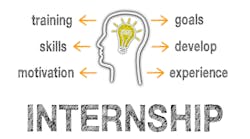One of the most important initiatives of the Biden administration was the gathering of top cabinet officials under the direction of then Labor Secretary Marty Walsh. It was called the Task Force on Worker Organizing and Empowerment and it was intended to direct federal agencies to work together to advance the interests of unions.
Since then there has been a burgeoning of such efforts, such as the interagency agreement between the NLRB and Federal Trade Commission (FTC)—a federal agency that was not previously known for its vigorous pro-union efforts. The latest was revealed in an announcement of best practices for employers
During an April webinar for employer attorneys, top officials of the Department of Labor (DOL), Equal Employment Opportunity Commission (EEOC) and NLRB discussed recommended employer “best practices” for preventing and dealing with retaliation against employees who choose to exercise their legally protected employment rights under federal law.
In addition, because of the resources it possesses, Congress has bestowed on OSHA’s whistleblower program responsibility not only for the OSH Act, but also 24 other laws covering product and food safety, fraud and financial issues, and transportation.
For that reason, during the webinar, OSHA Chief Doug Parker recommended consulting www.whistleblowers.gov. Websites of the other agencies represented at the webinar also have sections offering retaliation advice.
DOL Solicitor Seema Nanda explained, despite nuances among the laws and standards enforced by the participating agencies, retaliation generally encompasses an employee’s engaging in protected activity, which results in an adverse action.
The officials reminded the webinar attendees that adverse actions considered retaliation can include termination, confiscating immigration documents, threats, shift changes, reducing hours or responsibilities, blacklisting, demotion, isolation, and ostracizing—effectively any action dissuading an employee from raising a concern about a possible violation or engaging in other protected activity.
Attorneys from the law firm of Seyfarth Shaw reminded employers that protected conduct for workers can involve filing a complaint, planning or joining a lawsuit, complaining to a supervisor, or refusing to work. Employers are expected to develop anti-retaliation programs and policies and identify components of effective protocols to both prevent and respond to retaliation.
“The government takes retaliation so seriously because without employee participation in the enforcement process, agencies cannot effectively execute their missions,” the attorneys emphasized. “Indeed, these agencies’ view retaliation as one of the greatest threats to workers being able to exercise the rights guaranteed to them under the law, and to the ability of agencies to protect the exercise of those rights and ensure compliance with our laws. As a result, preventing and addressing retaliation is a top priority across agencies.”
What’s Expected of Employers
The inter-agency group produced a lengthy list of actions they recommend that employers take. They stressed that these are general, not mandatory, and do not interpret or create legal obligations.
- Provide training in plain, comprehensible language that employees can understand on relevant laws and regulations; types of retaliatory acts; employees’ rights and obligations; and elements of the employer’s retaliation program. Managers and supervisors should understand—and be provided examples of—what constitutes retaliation; how to deal with reports of retaliation and harassment; strengthen skills regarding de-escalation, conflict resolution, effective communication, and problem solving; and the consequences of retaliation.
- Ensure accountability by having management take a leadership role in preventing and addressing retaliation. Managers should set the tone, lead by example, hold themselves accountable, and empower workers.
- Develop a complaint process that provides avenues for employees to raise concerns. The process should provide for transparent evaluation, as well as fair, effective and timely resolution of complaints.
- Maintain program oversight through ongoing monitoring of, for example, the efficacy of anti-retaliation training, trends in complaints and subsequent resolutions, compliance with anti-retaliation policies, and numbers of worker reports to evaluate whether employees are coming forward with concerns. Internal audits are seen as beneficial as well.
- Evaluate policy and culture, including transparency surrounding working conditions and pay; potential chilling effects of safety incentive programs and employee monitoring; communications regarding the value of employees’ raising concerns; and no retaliation for employees who report alleged violations to the government.
After that—assuming that you have additional time left over after running your business—these government officials also want employers to adopt a detailed plan for responding to accusations of retaliation, that should include:
- Implement a system, which workers are made aware of, to receive and address complaints.
- Authorize appropriate personnel to respond to complaints, including providing remedies to employees.
- Establish independent reporting channels and ensure the confidentiality of reports to the extent practical, but do not impede government investigations or prevent employees from seeking other support or assistance.
- Investigate reports of retaliation promptly and thoroughly, ensuring reports are taken seriously and investigations are not tainted by preconceptions.
- Make sure the investigatory process is clear and is explained to the reporting employee. Both the employee and management should be kept informed throughout investigation.
- Close the investigation respectfully and properly.
- Follow up, as needed, to maintain continued anti-retaliation protection for reporting employees.
When providing remedies to employees who report workplace concerns, employers should consider how to make employees whole. The agency officials cited examples of how to do this, including reinstatement, by providing lost wages or other damages, and through disciplining supervisors who failed to follow retaliation policies.
Although supposedly voluntary, the failure to make a major effort to adopt this list of best practices could lead to these alphabet agencies leveling major charges accompanied by substantial financial penalties, in spite of characterizing their list of employer actions as nothing more than recommendations. The problem is that only the largest employers have the resources to properly follow all of the government regulations and agency orders they are expected to meet.
However, there is a plus side, according to Nanda. She holds that choosing to address retaliation in the workplace is a win-win. Because it is illegal, it is a critical part of employer compliance, and by instituting anti-retaliation programs, employers can avoid increased penalties and bad publicity, she believes.
Addressing retaliation can also improve the work environment, as employers who take retaliation prevention and response seriously can identify shortcomings and encourage employee engagement by reducing or eliminating fear of retribution for reporting issues, Nanda said.
Of course, none of this should apply to employers with a unionized workforce, where they are assumed by the government to be protected under a collective bargaining agreement that includes grievance procedures.




